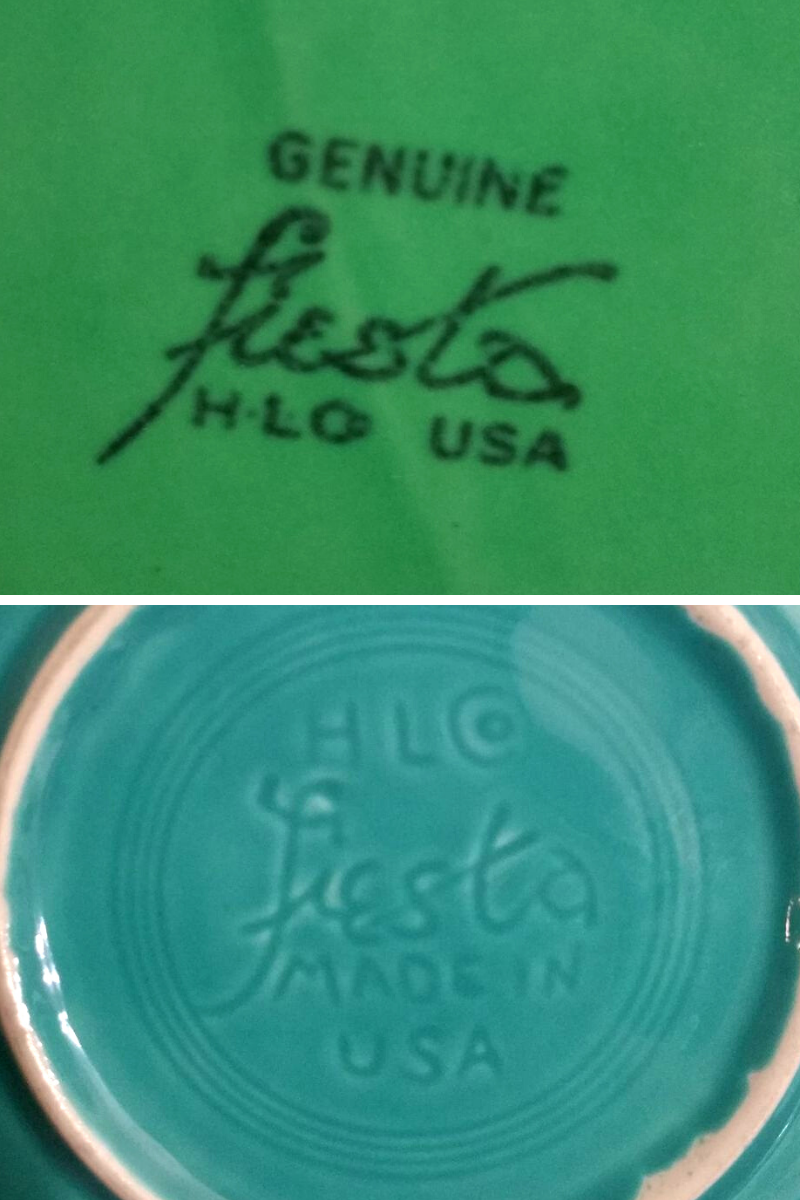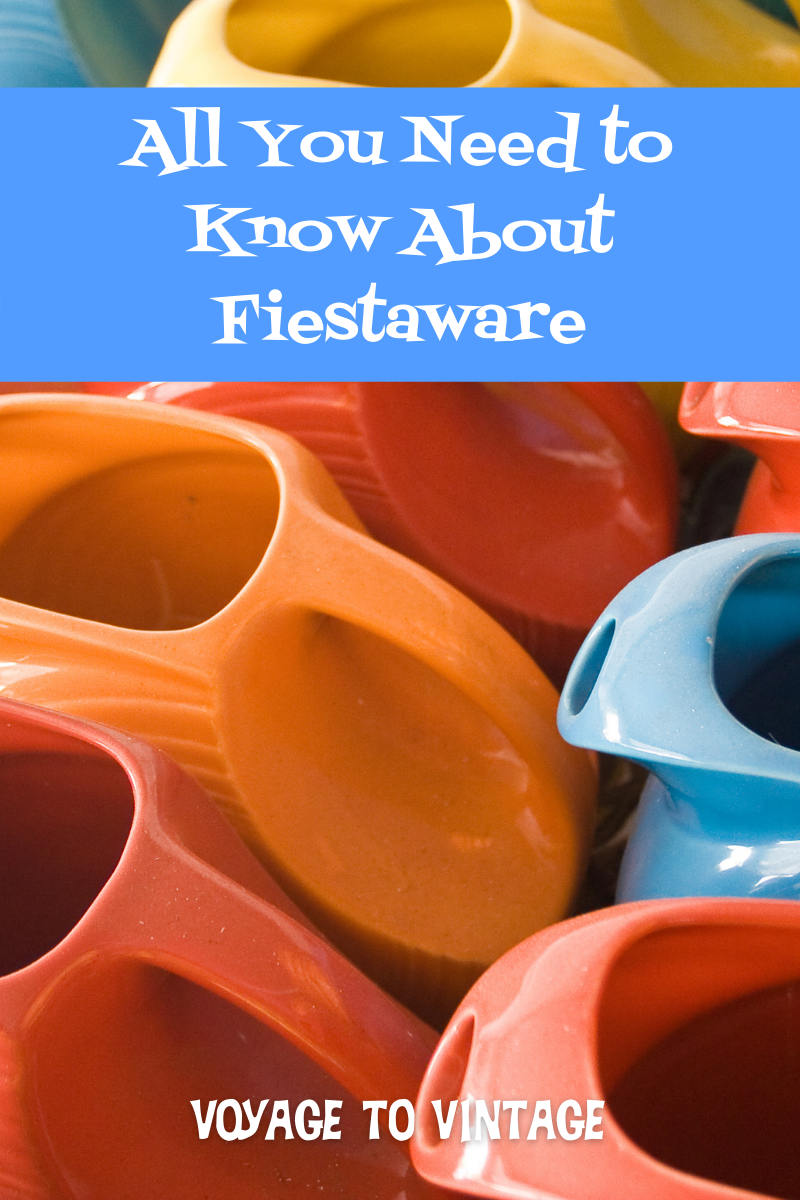All You Need to Know About Fiestaware: The Colors and the Backstamps.
Fiestaware by Homer Laughlin has been around since the 1930s. FOr nearly 100 years this colorful dinnerware and bakeware has graced many a table. It has become so highly collected that some pieces have sold for hundreds of dollars. The original colors (red, cobalt blue, light green, yellow, and ivory) are the most sought after but all colors of Fiestaware are popular.
Medium Green, made from 1959-1969, is the rarest and most hunted color. A piece of Fiesta in that shade is very difficult to find. The original red color, made from 1936-1943, is also incredibly rare. The red color was reintroduced from 1959-1972 so how can you tell if you have an original piece or a second edition?
FIESTAWARE BACKSTAMPS
The Fiestaware line features a huge variety of colorful pieces dating back nearly 100 years. The backstamp (branded mark on the bottom of the piece) has evolved which helps us better identify the timeline in which it was created.
Follow these steps to identify your backstamp:
Step One: Look on the bottom of your piece to determine whether your mark is ink or if it is imprinted into the piece. An imprinted mark means the piece is older, while an ink stamp will be a newer piece. While an ink stamp is usually an indication that the piece is new, some older pieces may be marked as such. The next way to determine the age is by looking at the “F” in Fiesta as explained in the next step.
Step Two : If the word “Fiesta” have an uppercase letter, your piece is new. If the “F” is lowercase, it’s older. Having a lowercase “F” without a loop at the top is a vintage piece. If the “F” is lowercase with a distinctive loop, it was made after 1986.
This top mark is from the 1960s. We know that because the medium green color was made from 1959-1969 and then discontinued. Although it is an ink mark, it is an “under the glaze” stamp. The lowercase “F” also determines it to be an older piece.
This turquoise piece has the “F” with the distinctive loop at the top which means this piece was made after 1986. Turquoise (originally made from 1937-1969) went into reproduction in 1988 so this piece is likely made between 1988 and 1992. After ‘92, a date code began to appear as part of the stamp. the absence of the date code helps us determine the timeline.
FIESTAWARE COLORS
There are over 50 colors of Fiestaware including those that have been retired. So how do you know which color you have? I found a chart which includes all the post-1986 colors. View the chart here.
For the older pieces, you might have to do some more digging or try a reference book like, Warman’s Fiesta: Identification and Price Guide.
I found another great resource if you’re interested in knowing the timeline history of each color. Just click here to see the complete chart.
Time For a Fiesta!
Talking about all of this colorful Fiestaware has got me ready to party! Share your favorite pieces with me and I’ll share them to my Instagram stories! Just DM me on Insta @voyagetovintage!
Let’s see those beauties!
XOXO,
Anna Kat




